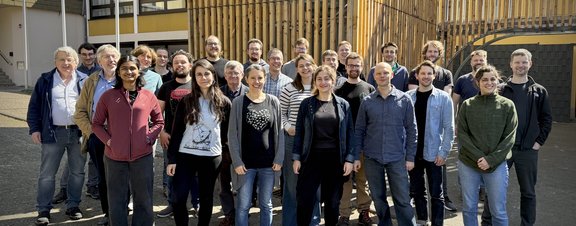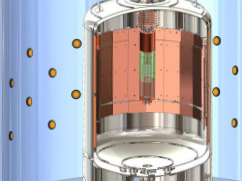
Non-Thermal Astrophysics
Division Prof. Dr. Jim HintonResearch in the division covers two main areas:
- high-energy astrophysics exploring the sources and acceleration processes of high-energy particles in the Universe, and
- probing particle physics beyond the Standard Model.
Our high energy astrophysics research is based primarily on ground-based gamma-ray astronomy using atmospheric Cherenkov telescopes and dense particle detector arrays to measure gamma rays emitted by high-energy particles in our Galaxy and beyond. The division has contributed major elements of the hardware of the H.E.S.S. Cherenkov telescopes and the HAWC high-energy extension, and plays a significant role in preparing the next generation Cherenkov Telescope Array - CTA. The group is also heavily engaged with research and development towards the Southern Wide-field-of-view Gamma-ray Observatory – SWGO. Associated research groups cover the theory and phenomenology of high energy astrophysics, plasma astrophysics and infrared astrophysics.
Exploring the properties of neutrinos, and in particular the search for neutrinoless double-beta decay, is another major activity of the division. We play a leading role in the LEGEND project at the Gran Sasso underground laboratory, following up on the success of its predecessor GERDA.
In the area of accelerator-based particle physics projects we are members of the LHCb collaboration, focusing on the study of heavy-quark production and decays, with emphasis on the phase space relevant to both particle physics and cosmic-ray physics.
Associated research activities
- Max Planck Research Group Astrophysical Plasma Theory (Brian Reville)
- Director emeritus Werner Hofmann
- Director emeritus Heinrich J. Völk
News
Future of neutrinoless double-beta decay: summit at MPIK
The 3rd International Summit on the Future of Neutrinoless Double-beta Decay held at MPIK discussed strategy and roadmap for next-generation…
So small and yet so powerful - The hidden power of the smallest microquasars
Researchers found for the first time evidence that even microquasars containing a low-mass star are efficient particle accelerators, which leads to a…
CTAO becomes an European Research Infrastructure Consortium
On 7 January 2025, the European Commission established the Cherenkov Telescope Array Observatory (CTAO) as a European Research Infrastructure…






